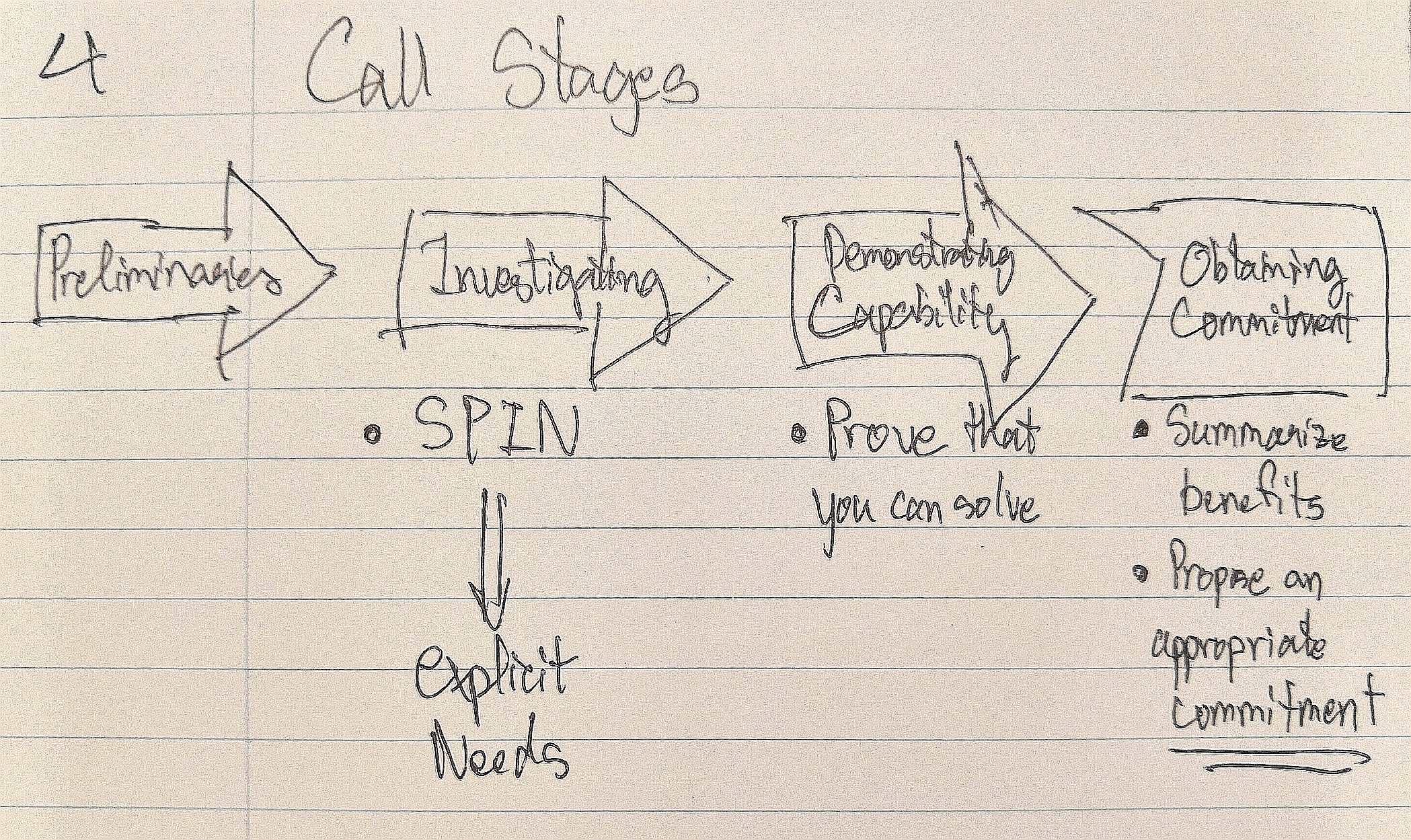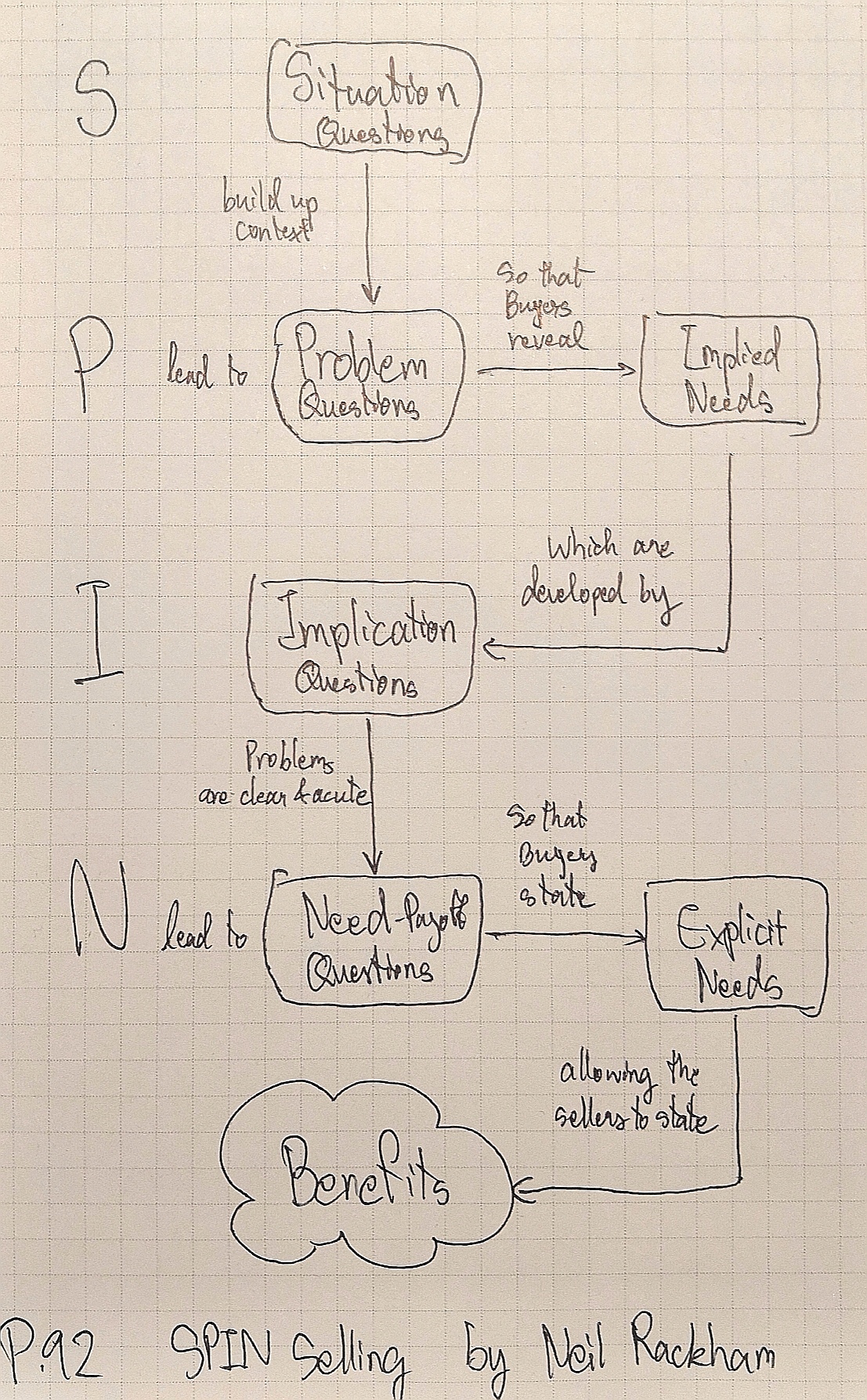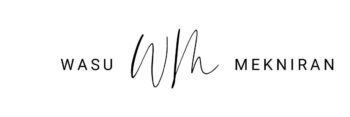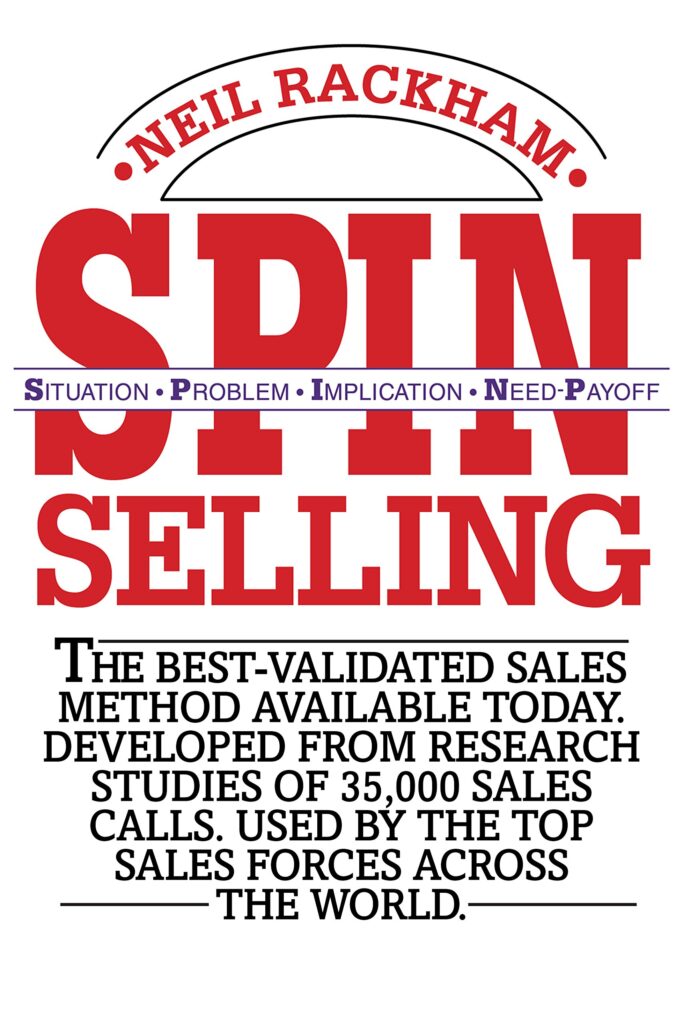Category: Sales
(27 von 100)
Why: I know nothing about selling.
Goal: learn a proven selling technique to practice.
Table of Contents
Action: Write 3 Problems that Your Service Solves.
3 Key Concepts
- Sales Stages: Preparing, Questioning, Proving, Closing.
- SPIN: Questioning about Situation, Problem, Implication, Need-Payoff.
- Closing is anyway important.
Summary
Pre-read material: Interview at INSEAD here
This is my first contact with Sales. I did not know what selling was really all about. But I still remember back 25 years ago when I was a kid, those salesmen were so great. I mean, they are fluent in selling by finding problems and offering their products. I have not encountered them anymore.
I assume that it is because I live in Japan, where small sales are 100% at the mercy of customers. Or maybe because the profit margin is too low to hire a salesperson for such deals here.
This book offered me a look into what sellers should be doing with a proven guideline. Neil said the mantra is “Remind yourself before start a call that you are a problem solver.” by asking.
What problems can I solve for this customer?
Neil Rackham
Sales Stages
Preparing, Questioning, Proving, Closing.
Neil actually called it Call Stages. This illustrates phrases from the beginning of a sales call to the end.

SPIN
So how do you question? As a guideline, you should follow the SPIN framework. SPIN: Questioning about Situation, Problem, Implication, Need-Payoff.
- Situation Questions: finding facts about the customer’s existing situation.
- Problem Questions: finding customer’s pain point and dissatisfaction.
- Implication Questions: finding the effects, consequences of problems.
- Need-Payoff Questions: finding the value or usefulness of a proposed solution.

Just to practice, here are some questions for each step in SPIN.
- Situation questions
“What equipment do you use now?”
“How many people do you employ here?”
“How old is this unit?” - Problem questions
“Is your existing machine hard to use?”
“Do you have quality problems?”
“Are you satisfied with …?” - Implication questions
Time: “Will it slow down your proposed expansion?”
Money: “Could that lead to increased costs?”
Effort: “What effect does that have on output?” - Need-Payoff questions
“How would that help?”
“Why is it important to solve this problem?”
“What benefits do you see?”
There you go, join me on this drilling process. Let’s sell our services 😉
Closing is anyway important.
Even though the book concentrated on Investigating process, it is undeniable that there would be no sales without Closing. It is only proved that too many closings in exchange for major sales would lead to fewer sales.
For those people like me, we don’t actually know what Closing means. Here is the definition from the author; I find it understandable.
What is Closing?
“A behavior used by the seller implies or invites a commitment so that the buyer’s next statement accepts or denies commitment.”
If you didn’t deliver a minimum of 5 closing attempts in a call, you didn’t do your job as a salesperson.
J. Douglas Edwards
To sum up, I am exciting reading this book as it shows me the world of making direct money in contrast to marketing, where it is more subtle and conceptual. I suggest that you watch many of Neil’s interviews online if you are not sure the difference between sales and marketing. It helped me, as he mentioned this point quite often in videos.
Goal check: I learned a proven questioning guideline that leads to more sales.
Wasu’s Review
( 5.0 / 5.0 )
Get this book on Amazon here!
Bonus: here are some standard Closing Techniques.
- Assumptive closing: assuming that the sale has been made.
“Where would you like it delivered?” - Alternative closing: assuming and asking for specification.
“Would you prefer delivery on Tuesday or on Thursday?” - Standing-room-only closing: “If you can’t make a decision now, I’ll have to offer it to another customer who’s pressing to buy it.
- Last-chance closing: “The price goes up next week, unless you buy it now.”
- Order-blank closing: one fills the customer’s answers on a n order form.

